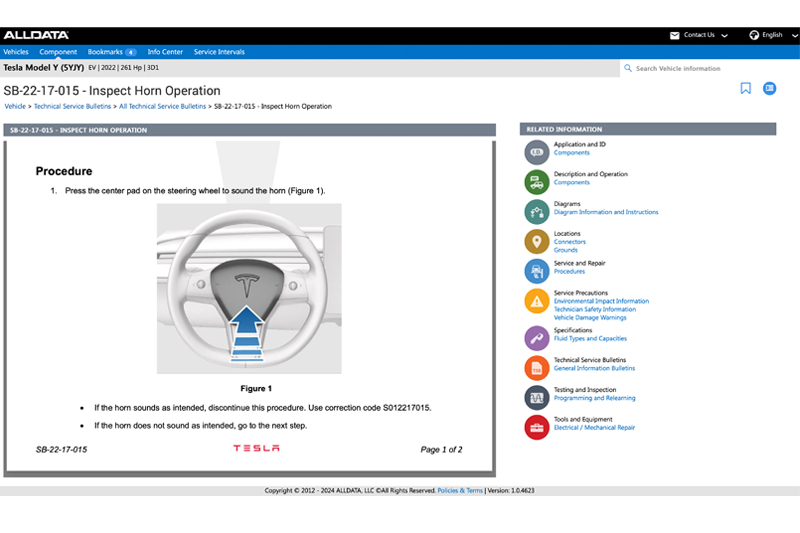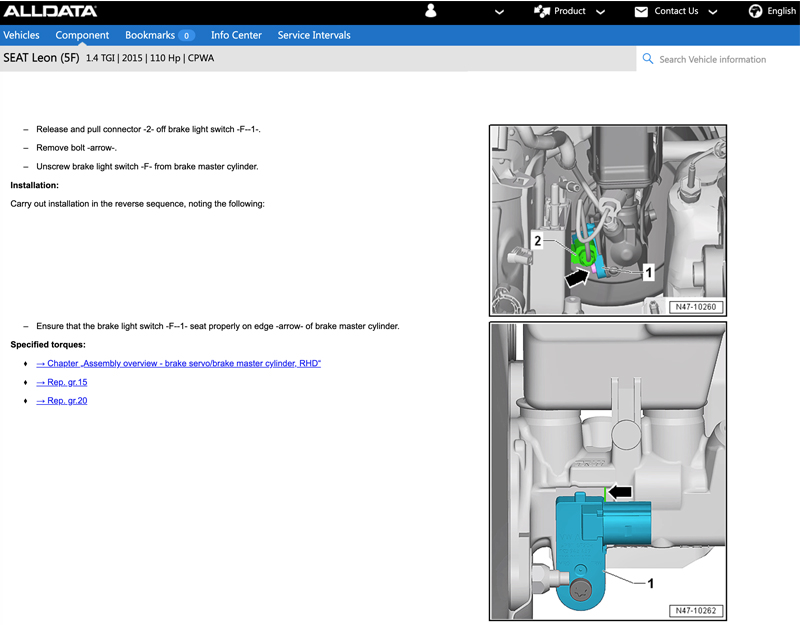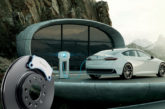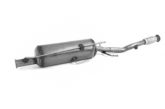
In this article, we highlight two recent fixes which Alldata provided to customers in distress.
Why was the horn on a 2022 Tesla Model Y failing to sound?
The team was recently presented with an issue on a 2022 Tesla Model Y. The vehicle owner revealed to the technician that when the horn was pressed on the steering wheel, it didn’t make a sound, which was obviously an issue that needed to be sorted.
A basic diagnostic check was carried out and it was discovered that no supply was present at the horn. Due to the nature of the vehicle and inability to source a fuse for the horn, however, the technician turned down the work.
Solution
Alldata’s recent integration of Tesla into the portal provided the answer to this honkless horn. Although relatively uncommon, some vehicles can experience an issue with the connector, the one that sits behind the steering wheel, in that it can loosen or even disconnect completely.
The horn on these vehicles is supplied though their body control module, so, as the customer stated that there was no power to the horn, it was likely that the issue was linked to the horn connector.
The first procedure was to disconnect the LV power supply and separate the driver’s airbag from the steering wheel. The next task was to check the connector, making sure that male and female parts were thoroughly secured together.
The final job was just to reassemble the components, test and relish the tooting Tesla once again.

What caused the brake light problem on a 2015 Seat Leon 1.4 TGi?
This was an occasion when the European technical support team were required. A 2015 SEAT León 1.4 TGi had recently failed its MOT due to its brake lights not working. The technician attending the job began by verifying the condition of the brake light bulbs, ensuring they were in good working order.
Upon inspection, it was determined that there was no power supply reaching the bulbs. Despite efforts to locate a specific fuse, none could be found in the vehicle. Consequently, the decision was made to investigate the brake light switch; however, upon removing the lower half of the dash to access the brake pedal, it became apparent that there was no brake light switch attached to it.
This discovery left the technician uncertain about the location and operation of the brake lights. This prompted the need for assistance from ALLDATA Europe’s technical support team.
Solution
Thankfully, this was a request that had been received and resolved by the group of specialists before. From the outset, it’s important to state that had the technician in question had access to quality repair information from the start, it would’ve been a straightforward repair.
With quality repair information readily available, they could have referred to the wiring diagram for the brake lights. This would have highlighted the fact that the brake light bulbs are module-run and do not rely on a specific fuse, thus saving valuable time.
Furthermore, they would have been able to access the replacement instructions for the brake light switch, which would have revealed that the switch is not located on the brake pedal as initially assumed. Instead, it is situated under the bonnet, within the brake master cylinder.









